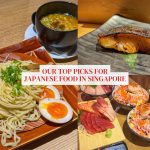Preserving Peranakan culture

In line with the effort to preserve the Peranakan heritage, this year’s Singapore Food Festival is on “Celebrating Our Unique Cultural Heritage The Peranakan Way”. To understand more about Peranakan’s colourful heritage and how the culture can continue to flourish despite the decreasing number of true-blooded Peranakans, inSing.com speaks with acclaimed Peranakan Chef Peter Wee.
Chef Peter begins by explaining that the most important factor in preserving the Peranakan culture is the Peranakan’s in-bred love for their practices, ways and traditions. “Nonyas are taught to cultivate feeling for their creations, and food is a very strong way of preserving our culture,” Peter says.
Undoubtedly, cooking and food is a big part of Peter’s life, whose love for culinary creations was passed down to him from his grandfather and nanny. In his spare time, Peter, a fourth generation Baba and the first vice president of the Peranakan Association of Singapore, says he enjoys conducting what he calls “market surveys”. “My grandfather used to know the prices of ingredients sold at the different markets and he passed this habit on to me as well! There are so many markets in the Eastern side [of Singapore] and I really enjoy making my rounds and surveying the prices. You have to know your ingredients to make good food,” he says.
As for what makes the Pernankan culture so unique, Peter says it is largely due to the culture’s mixed heritage. “I’d say Peranakan culture has a stronger British influence than one might imagine. It’s maybe 80% Chinese in terms of customs and traditions, and 20% Malay, Indian and British-influenced. The dressing and ways of speaking are quite Malay in nature.” This fusion of cultures is what makes the Peranakan cuisine a hotpot of culture and tastes. “We use pork and the wok in cooking, so that’s from the Chinese, and many different spices such as coriander and lemongrass, which come from Malay and Indian influences.”
Needless to say, Peter is highly supportive of the fairly recent unprecedented boom in the interest in Nonya culture. “The culture has undergone ups and downs over the generations, and we’re definitely getting a lot of interest and recognition today, with TV programmes like The Little Nonya which highlights the plight of Peranakan women in those days, and so on.” He also lauds the efforts of bodies such as the National Heritage Board and the Singapore Tourism Board in promoting awareness of the culture both locally and abroad.
Going forward, Peter hopes that this new wave of interest in Peranakan culture will not die out but continue being revived in a big way. He notes that the younger generations are attracted to firstly, the material culture of the Nonyas, such as the beautiful kebaya, and secondly, to the food. “They must keep asking for it at home, and that will ensure the food culture will be retained,” he says.
Chef Peter Wee’s five favourite Peranakan dishes
To enhance our understanding of the Pernankan food heritage, Peter shares with us the culture behind his five favourite Peranakan dishes and his experience in making them.
 Itek tim (Salted mustard duck soup)
Itek tim (Salted mustard duck soup)
This dish has some roots in traditional Chinese duck soup, but differentiated by the use of spices and belachan mix when cooked the traditional Peranakan way. Itek Tim is an evergreen Peranakan cuisine, and is also offered for ancestral worship as well as reunion dinners. “Stewed duck made in three kinds of assam – belimbing (belimbing fruit) assam, plum assam and assam puay (dried tamarind assam) – with a giam chai (salted vegetable) marinade. “I grow and make my own belimbing assam for best effect,” says Peter.
Cincalok (fermented krill)
Passed down over generations of Peranakans, cincalok is tedious and time consuming to make and demands great attention to detail. The dish is fermented with cooked rice and brandy for three days. “If the process is not done right, it can easily turn bad. The whole process is also not clean and dry,” Peter says. Portuguese in heritage and originating from Malacca, the dish is also known by its Malaccan name “grago”. “I really enjoy cincalok because it’s quite unique-its sour flavour whets the appetite and makes for a great appetiser. It also goes so well with fried fish. We always make our own because what you get outside is far too salty.”
Achar (pickles)
A traditional family favourite among Peranakans, this appetiser is fermented in a pot called the “kamcheng”. “This pot is always being carried around by the little Nonya in the popular TV show,” Peter says. A truly original Peranakan dish, achar is a signature family favourite to give away at festive occasions. Every New Year, Peranakan families will make about 7 to 8 kilos of cucumber and cauliflower, cabbage, radish, carrots, vinegar and rumpa (belachan concoction). Green chilli and papaya are favourite additions as well.
Buah paya masak titek (green papaya soup)
Peranakan families like to cook this traditional favourite daily or at least once or twice a week. A green papaya soup with a slightly spicy flavour, the titek comes from a combination of good belachan, shallots and candlenuts. “This is my favourite everyday dish. The main ingredient that gives it its spicy flavour is the white pepper,” says Peter. The soup is boiled with green papaya as well as dried salted fish bones to give it a full flavour. Basil leaves are used to garnish this mealtime favourite.
Ayam sioh (stewed chicken)
This is a festive dish cooked most often for reunion dinners. As the preparation process can be daunting, it is not commonly served at the dinner table. “The dish consists of a sweet and sour concoction of shallots, assam and sugar which may be prepared with chicken, pork or duck and marinated overnight. Peter adds that it’s not easy to make an authentic ayam sioh – “Most of the time it turns out looking like tau yu bak (black sauce pork) when it should be dryer, like a kind of rending.
To celebrate the Singapore Food Festival this year, Peter will be conducting a talk on Memories of the Peranakan Kitchen at the seminar The Art of Peranakan Dining at the Peranakan Museum on 24 July. He will also be giving a cooking demonstration and tour at Katong Antique House on 20 July. The Singapore Food Festival runs from 17-26 July 2009.




